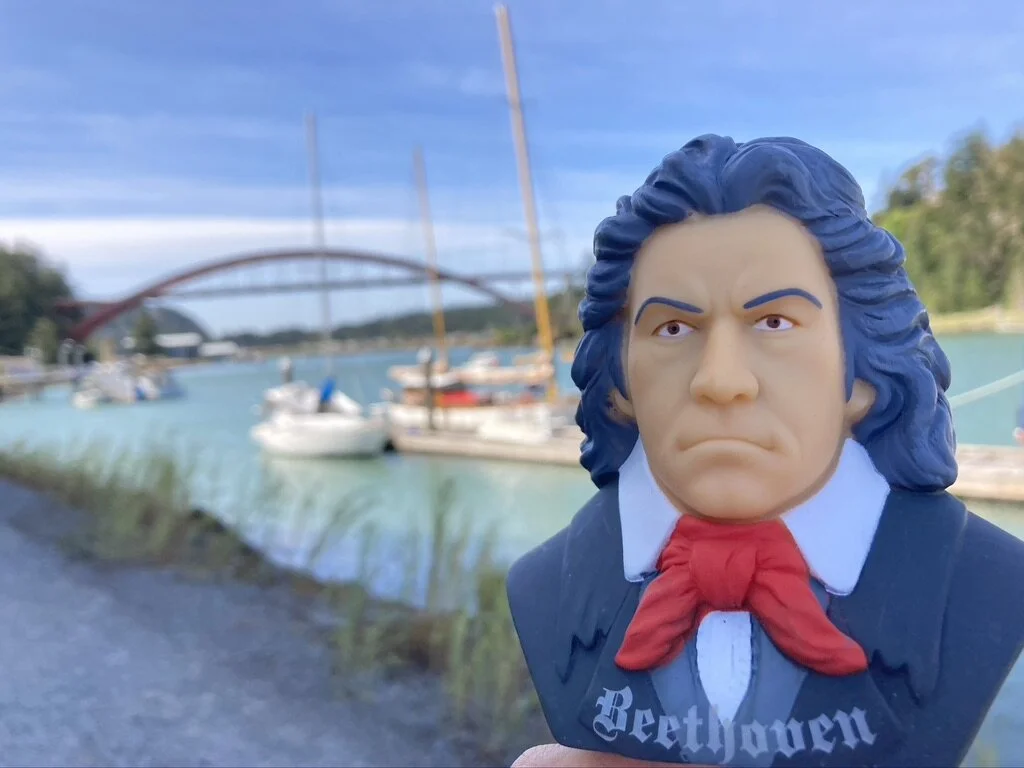Adventures with Beethoven
Scene One
Fun Facts
No one knows Beethoven’s actual birthdate, Since there was not a birth certificate, official acknowledgment of Beethoven’s birth is from his baptism at the local Catholic church which occurred December 17, 1770. At the time in that region it was traditional to baptize infants the day after they were born, so most scholars consider December 16 his birthday.
Beethoven’s father wanted to present young Ludwig as a prodigy, like Mozart. So he often lied about his son’s age to make his talents look more remarkable. For many years, Ludwig thought he was born in 1772 not 1770.
Beethoven often attributed his deafness to a fall he suffered. Most likely, it was the result of a childhood disease such as typhus or smallpox. By the age of 27, he had already begun to lose his hearing.
Beethoven hated giving piano lessons, unless they were for extremely talented students or very attractive women.
Beethoven left school at the age of eleven and never learned how to multiply or divide. Until the end of his life, he would lay things out in sets to come up with the answer.
“Ode to Joy” is the National Anthem of Europe.
Beethoven did not name his Sonata Op 27, No. 2 “Moonlight”, he called it No. 14. The German poet, Ludwig Relstab, thought it sounded reminiscent of the moonlight on Lake Lucerne and began referring to it as the “Moonlight” sonata and the name stuck.
After Beethoven became completely deaf, he used conversation books to talk to friends. They would write down what they wanted to say to him so he could respond.
The nickname “Emperor” was given to Piano Concerto No. 5 not by Beethoven, but by the work’s English publisher Johann Baptist Cramer. Another story credits the work’s nickname to a comment made by one of Napoleon’s officers stationed in Vienna who said after hearing the work performed by Carl Czerny that it was “an emperor of a concerto.” Whichever story is true, the name has stuck with the work ever since.
According to legend, Franz Clement, the violinist who premiered the Violin Concerto, was incredibly annoyed with Beethoven’s tardiness with the solo part, which Clement received the day of the performance. In one story, Clement played one of his own compositions between the first and second movements of the concerto. Other stories say he waited until the end of the concert and used his piece as the encore. Supposedly the piece required only one string and was played upside down.
In most portraits, Beethoven looks unhappy or even angry. Many of these paintings were based on a mask made of Beethoven’s face. In order for the mask to work, Beethoven had to lie completely still, without smiling while the mask hardened.
